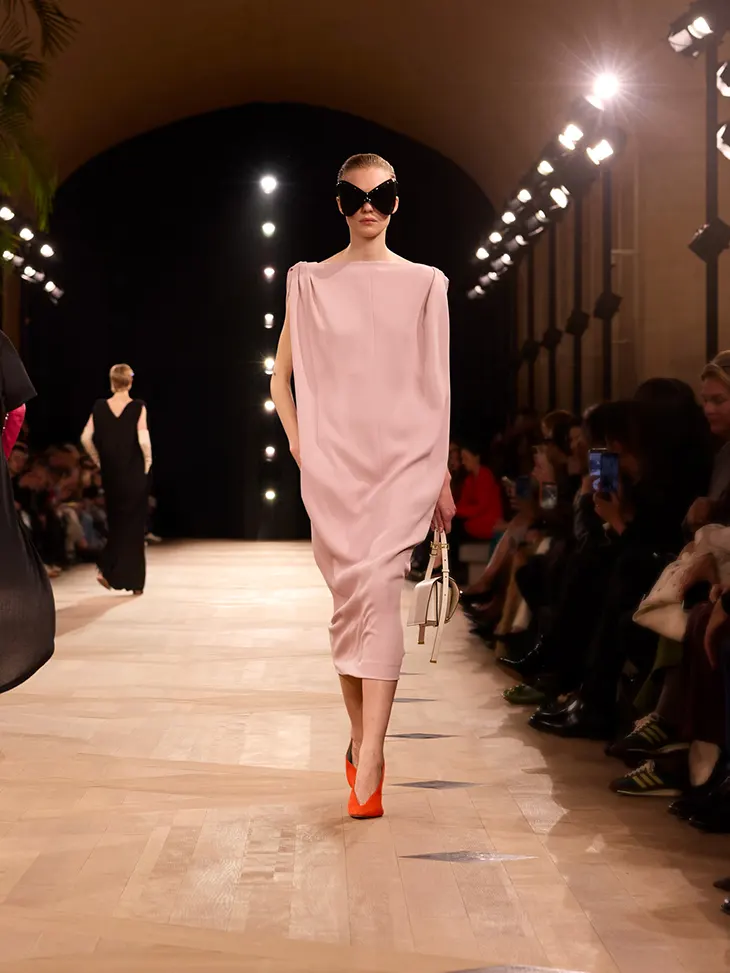
Pierpaolo Piccioli marked his return to fashion with his debut at Balenciaga, presented at the house headquarters. After leading Valentino from 2016 to 2024, Piccioli entered Balenciaga with a collection that brought his signature approach to color, shape, and tailoring. He drew inspiration from Cristóbal Balenciaga’s 1957 Sack Dress, a radical piece of couture that rejected the corseted Dior New Look of the era. “He freed women to live in their own space. His method was body, fabric, and air. I want to put the human at the center of everything,” Piccioli explained.
The show opened with his homage to the Sack: a long black V-neck evening dress, unfitted through the torso, styled with white opera gloves and oversized sunglasses reminiscent of Demna’s extreme shades. Piccioli openly acknowledged the house lineage: “It would be stupid to deny who has been here before: Demna, Nicolas Ghesquière, and Cristóbal.” His debut did not reject the past but drew strength from it.
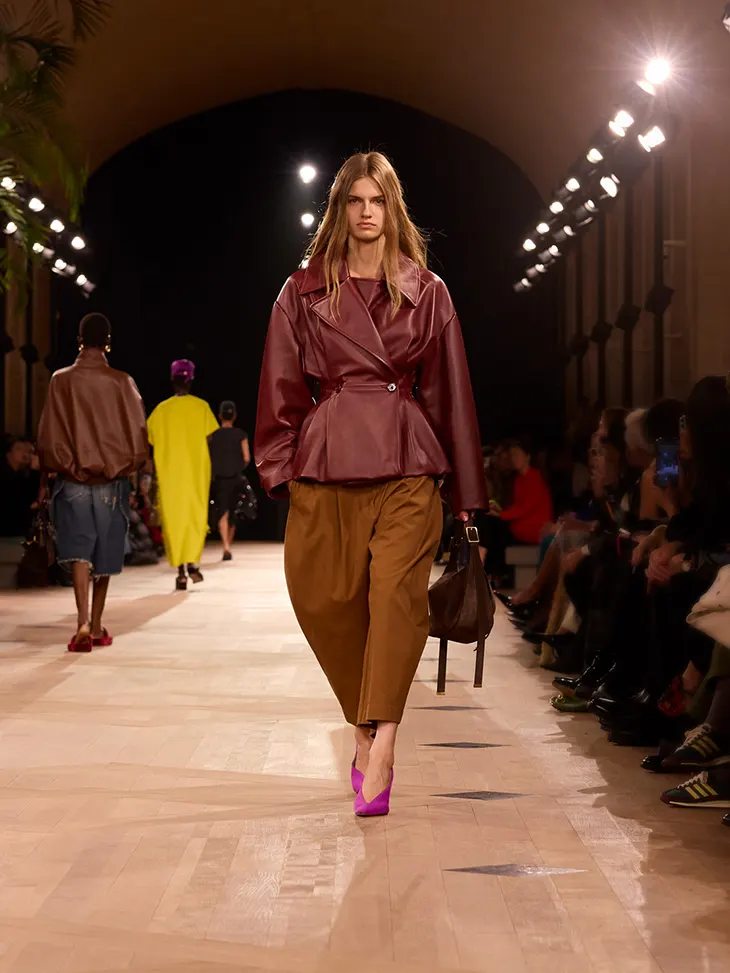
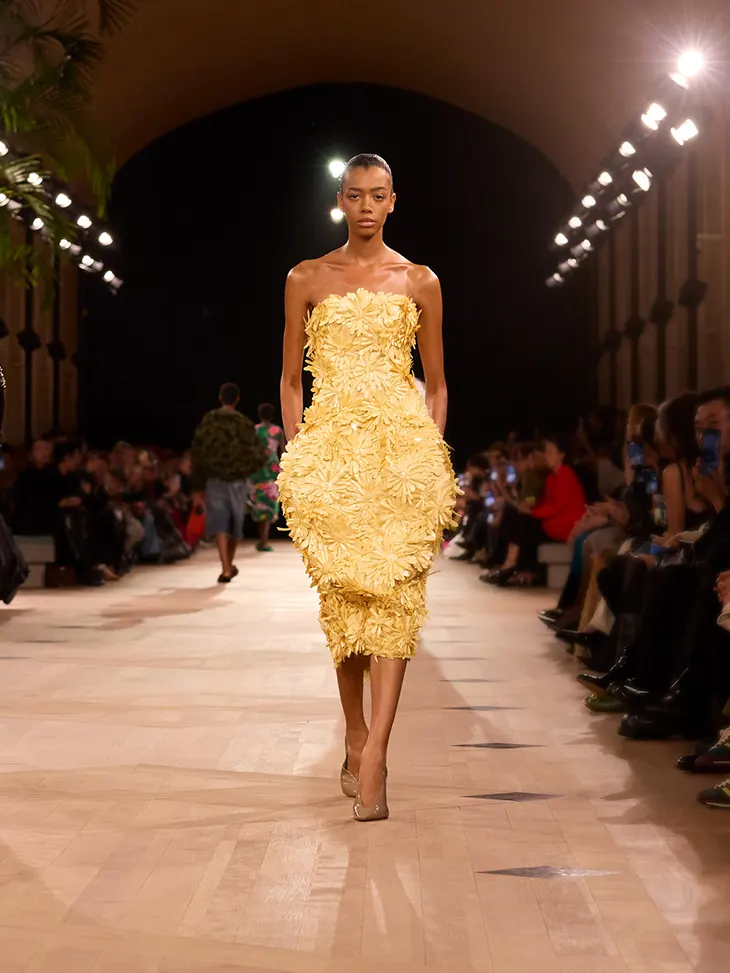
The collection emphasized shape and volume. Balloon skirts moved alongside a reinterpretation of the cocoon coat in absinthe green. A magenta trapeze dress finished with a puffed ruffle hem appeared next to a vivid red one-shouldered gown trailing a spiraling scarf. Nicolas Ghesquière’s influence emerged through conceptual riding hats, one paired with a double-breasted navy peacoat worn over khaki shorts cut with the volume of a skirt. Piccioli referenced Ghesquière’s own reinterpretation of Cristóbal’s codes, particularly his 2008 runway.
Piccioli also reintroduced the Balenciaga tunic, styled over narrow black trousers. The piece remained plain at the front but opened at the back of the neck, giving it presence without complexity. Simple in line, it carried the freshness of a white T-shirt but carried a refined balance suited to eveningwear. Similar shapes have surfaced at The Row and Alaïa, yet here Piccioli offered a distinct version that aligned with his interest in pared structures.
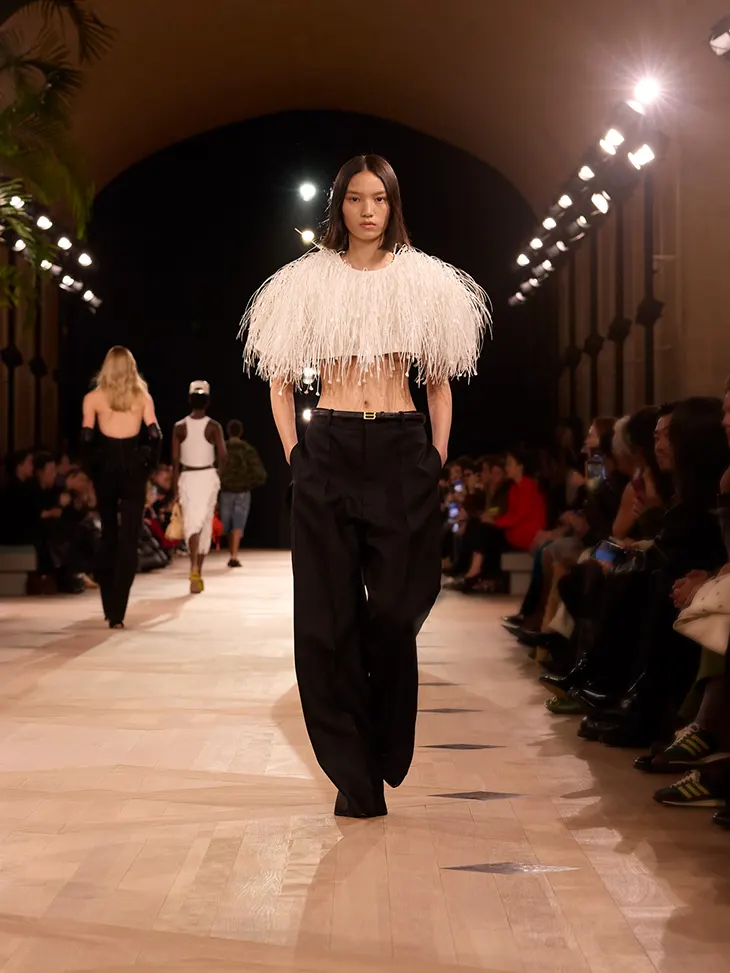
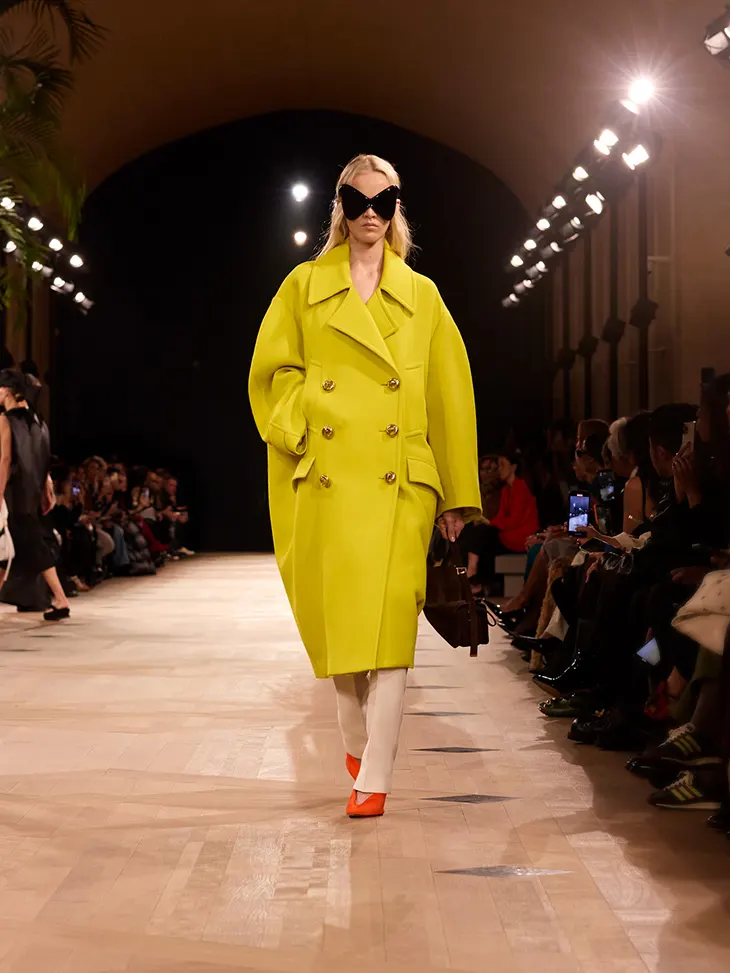
Eveningwear stood at the core of the presentation, extending Piccioli’s long-established strength. Dresses carried grandeur without theatricality, signaling an appeal to customers seeking sophistication. While oversized hoodies and meme-driven designs were absent, Piccioli still acknowledged Demna’s influence. He cut chinos with couture precision, shaped a bomber jacket into a leather bubble, and transformed an oversized white shirt into a garment with a train.
Piccioli avoided gimmicks and spectacle, delivering fashion with optimism and craft. His Balenciaga debut signaled an adjustment in direction, one that keeps couture heritage alive while offering a new perspective on contemporary luxury.
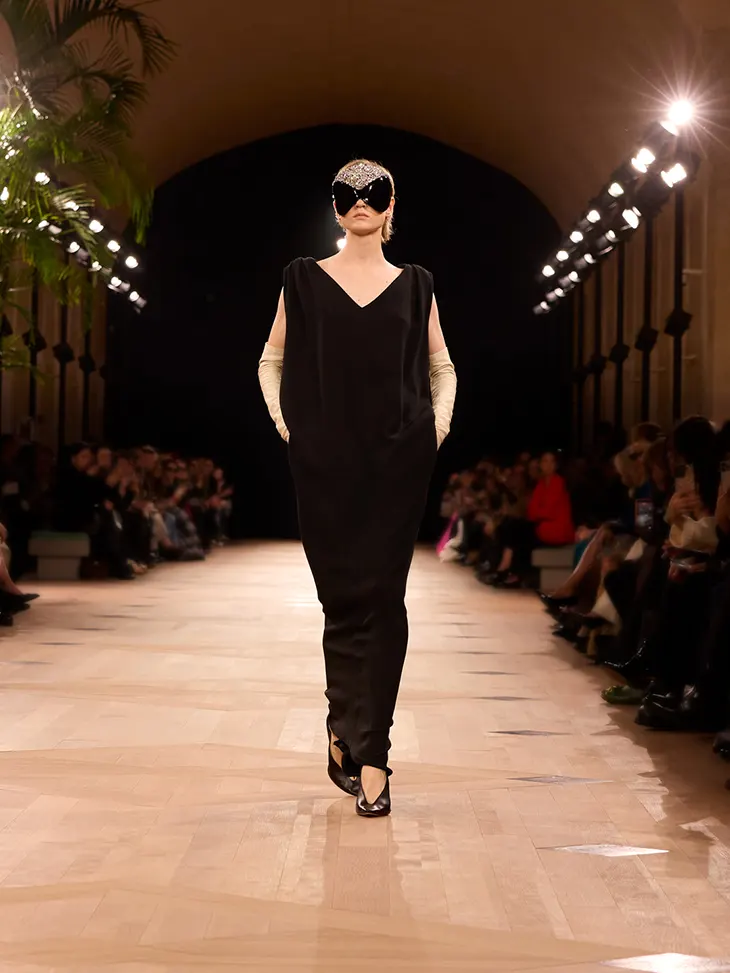
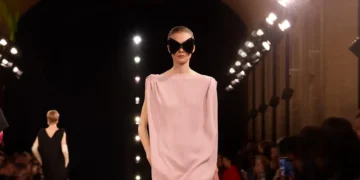














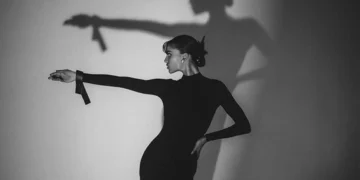
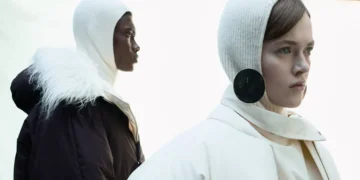
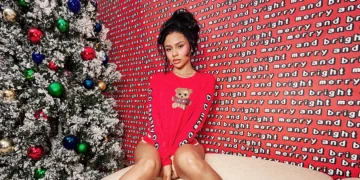


It’s nice but not sure if it goes beyond I believe he was just trapped into honoring Cristobal with the collection. It is hard to go there cause we have already seen the exploration of the Balenciaga heritage in many shapes and forms 🙏